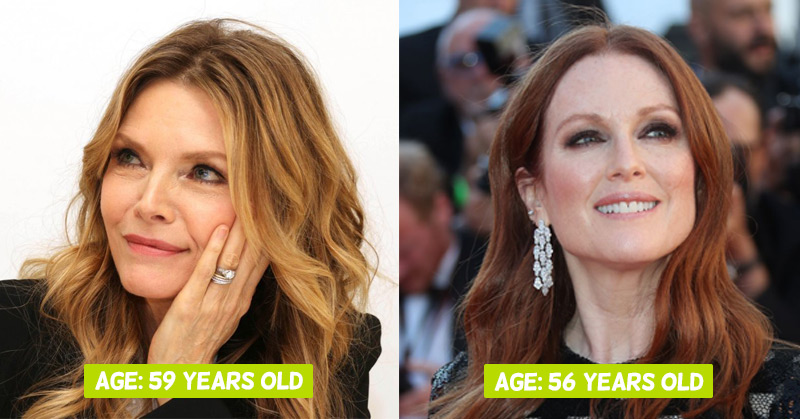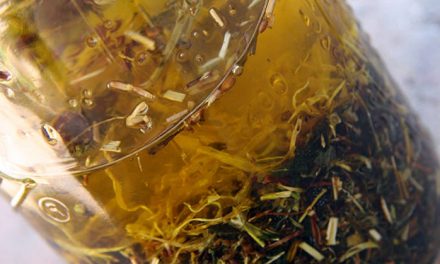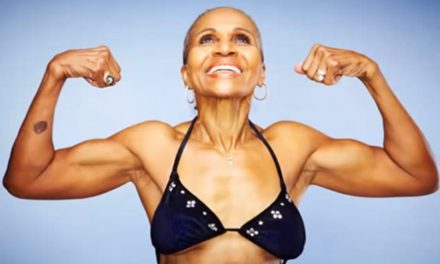We all know the signs of aging skin: blemishes, colored spots, crow’s feet, fine wrinkles, and saggy cheeks. These are symptoms we cannot help, due to natural factors like a lifetime’s worth of sun exposure, slowing cell division (which produces thinner skin), shrinking oil-secreting glands, and repeated smiling or frowning. But as gracefully and naturally as we would like to age, sometimes it’s hard to not reach for anti-aging cream if only to alleviate some of these unwanted facial features.
RELATED STORY:
But research shows we should resist that temptation. The anti-aging cosmetics industry is often riddled with false and exaggerated claims about the effectiveness of their products, and often use ingredients which have not been proven to be significantly effective in human uses, like selenium and alpha-lipoic acid. These products are also often very expensive.
Do Natural Ingredients Work?
First things first – no amount of anti-aging creams will help if the basic guidelines of a healthy lifestyle are not followed. Our skin is a reflection of our internal health, therefore eating a diet plentiful in fruits and vegetables, low in processed food and consuming good quality protein and fats is a must. Beyond that, it is crucial that people do not expose themselves to factors that can exacerbate skin-aging, like prolonged UV radiation, lack of exercise and excessive air pollution.
That being said, some natural ingredients in anti-aging creams do hold promise, but either the concentration or potency is extremely low, or there hasn’t been enough research conducted to show it is effective in topical form. Clearly, we should focus first and foremost on getting higher doses of these ingredients – preferably, through a natural diet full of them – if we are to maximize our chances of benefiting from their potentially anti-aging effects.
- Selenium and alpha-lipoic acid – While both ingredients are powerful antioxidants and could help protect the skin from sun damage, there is little conclusive proof that they have anti-aging benefits, and more human trials are needed to confirm their effects.
- Vitamin C – Vitamin C is a powerful antioxidant that could help rebuild collagen, a protein that keeps skin tight and reduce wrinkles. However, though vitamin C has been found to help protect or reduce wrinkling in rats, no vitamin C product has been approved as effective treatment for age-related skin conditions in humans.
- Vitamin E and B complex vitamins – Vitamin E and Niacinamide, a B complex vitamin, are two ingredients that could provide the body with antioxidants and anti-wrinkling properties. But again, much like vitamin C, there is no substantial proof that an ointment containing these vitamins may be a significantly effective in treating aging skin. These antioxidants are also only poorly absorbed skin and tend to have mostly short-term effects in alleviating symptoms of aging skin.
- Aloe, ginger, grape seed, and coral extracts – These natural foods and extracts contain a large amount of antioxidants, which could have potentially anti-aging effects on the skin. However, there is very little proof that they have any anti-wrinkling effects on the skin.
- Alpha hydroxy acid (AHA) – Small doses of AHA could help exfoliate stubborn protein layers on the skin, and help encourage more collagen to grow. However, this should only be used under the discretion of a dermatologist, as it could cause skin burns, itching, pain, scarring, and increased chances of sun damage to the skin.
- Copper peptides – Copper could act as powerful antioxidant barriers to the sun’s UV rays, and therefore reduce the amount of wrinkles or risk of certain skin cancers for the skin in the long run. However, high doses of copper could itself have harmful effects on the body.
There are, of course, more effective professional methods that could make your skin look younger. Chemical peels, dermabrasion (deep-layer skin peeling), laser therapy, facelifts, and botox injections could all do the trick, so long as you’re willing to undertake the extensive cost, multiple treatments, and potentially unpleasant side effects.
Luckily for us, there are also cheaper, natural anti-aging skin care methods that may do you some good. Here, we introduce some facial exercises that may address one of the biggest problems with aging skin: Wrinkles!
Try these anti-wrinkle facial exercises!
Wrinkles can form easily when you repeat the same few facial movements over a long time, like frowning or smiling. So why not try loosening up those muscles, improving blood flow, and diversifying facial movements? Try some of these facial exercises from our friends at BollywoodShaadis and Men’s Fitness to prevent wrinkles and firm up your face. No artificial ointments needed!
1) Do the goldfish – for firmer cheekbones and cheek

Suck in your cheeks and move your lips up and down, much like a goldfish, for 20 to 25 seconds. Repeat this set 5 times. Alternatively, mouth an “O” and put your lips over your teeth. Hold for 5 seconds. Repeat this 3 times a day.
2 ) Drop your Jaws – for gorgeous jawlines
Drop and push out your lower jaw and hold it for 10-15 seconds, until you feel your cheeks stretch, especially at the base of your ear. Repeat 5 times a day.
3) Open your eyes – to reduce puffiness around your eyes

Open your eyes wide, as if in shock, and hold for 10 seconds. Relax for 5 seconds after. Repeat this twice a day.
4) Balloon your cheeks – to deflate your laugh lines

Balloon your cheeks with air and hold for 10 seconds. Repeat 5 times a day to stretch out your cheeks and stop your laugh lines from worsening.
Alternatively, repeat the sounds “oo, ee, ah” with exaggerated movements, without your teeth touching. Do this 10 times. Repeat the set 3 times a day.
5) Stretch your neck – to shrink your double chin

Hold your face upwards and outwards to stretch your neck, and fold for 5 seconds. Repeat this 7 times a day to see a difference in just 4 weeks.
6) Kiss the air – to keep your mouth and chin from sagging

Pout, as if to kiss the air, and hold for 5 seconds. Repeat 5 times a day.
Alternatively, place an elbow on a table, with your fist supporting your chin. Then try to open your mouth while pushing down on the fist with your jaw. Hold for 5 seconds and then release. Do this 10 times. Repeat the set 3 times a day.
7) Look to the sky – to relax your eyes

Keep your face looking straight ahead – and look upwards as high as you can with your eyes, without moving your head, for as long as you can. Then do the same, except while looking down. Repeat these movements 2 times every day.
8) Push down your brows – to build forehead muscles

Place your fingers directly above your eyebrows with your finger nails, and then push down on your brows, At the same time, move your brows up and down. Do this 10 times. Repeat the set 3 times. Rest, and then do another 3 sets of 10 up-and-downs.
Other natural ways to reduce the symptoms of aging skin
- Use plenty of sunscreen. Exposure to UV radiation in sunlight can encourage wrinkling and risk of skin cell cancers, like melanoma. Use plenty of UVA and UVB sun protection every day, even if you’re not going outside, to protect yourself from sun exposure.
This is a solution we would NOT recommend. Check out these stories for the reason why:
- How Sunscreen Could be Causing Cancer, NOT the Sun
- The Sun Doesn’t Cause Skin Cancer, But Sunscreen Does!
- Avoid outdoor activities between 10am and 4pm. UVB exposure is strongest in the United States between 10am and 4pm in summer time. Wear longer, thicker clothes to protect against the sun when possible. Avoid reflective surfaces, like water or white concrete, as well as high places and cloudy, hazy weather.
- Eat a healthy diet full of vitamins A, C, and E. Sun exposure and air pollutants can reduce the amount of vitamins A and E in the body. Try eating super fruits full of antioxidants and important vitamins, like avocados, blackberries, and kale, as well as healthy oils and whole grains, which can protect your skin from damage by oxidants.
- Drink a cup of green tea and/or red wine every day. These foods are full of antioxidants, which can help stop oxidants – substances that increase risk of cancers and stiffen the skin – that form from long exposure to the sun.
- Moisturize your skin. Avoid dry and scaly skin, which could cause flaking and contribute to wrinkling.
- Wash your face at least twice a day. Try washing your face at least once int he morning and once at night, as well as after sweating. Remember to use lukewarm water, as high-temperature chlorinated water could foster wrinkle formation – and do not wash too often, as that could get rid of oil and moisture from your skin.
- Quit smoking. Cigarette smoke increases the amount of oxidants within the body.
- Meditate and relax. Stress fuels the body with stress-inducing adrenaline and cortisol hormones, and high cortisol levels have been associated with symptoms of aging and frailty.
- Exercise and stretch daily. Increasing blood flow to the body helps move oxygen to the skin and keep it supple. Stretching the muscles in a wide variety of movements prevents the creation wrinkles, from stiffness or repeated limited muscle movements.
- Make your own toners. If you would like to apply vitamins and nutrients in natural doses and without industrial-standard ingredients, try making your own natural toners to moisturize and supply some vitamins directly to your skin.
- Avoid sun lamps and tanning beds. Even 15-30 minutes of UV exposure from tanning could do as much damage as a whole day spent in the sun.
Embracing our aging skin could be a challenge, especially when we find certain wrinkles or sunspots unflattering. But by reducing sun exposure, moisturizing, exercising our skin and muscles, and living a healthy lifestyle, we may be able to reduce the look of these undesirable symptoms naturally and holistically.












